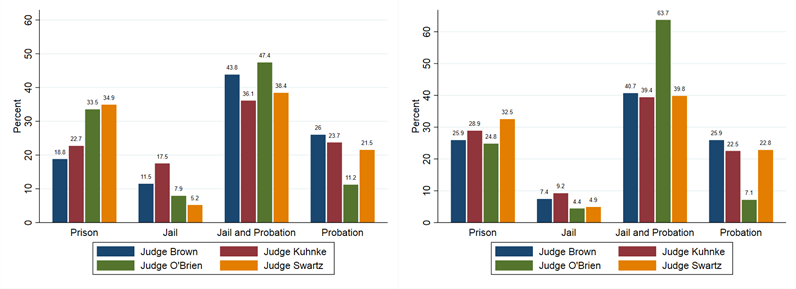LANSING, MI, July 20, 2023 – The State Court Administrative Office today released “Sentencing in Michigan’s 22nd Circuit Court” – a detailed examination of felony cases sentenced between 2015 and 2019, including 4,118 defendants distributed across four judges. The study found that while Black defendants received higher sentencing guideline scores compared to White defendants, those scores did not fully account for the difference in the percentage of defendants sentenced to prison in cases where sentencing types vary. Going forward, this data will be used to help Michigan’s judiciary achieve greater equity.
“The goal of Michigan’s judiciary must be individualized sentences without disparity due to the race or ethnicity of the defendant,” said State Court Administrator Tom Boyd. “This study will help trial judges become aware of disparities, so that they can take action to make sure their courts treat all defendants equally. Our plan is to make this kind of data available statewide.”
At the request of the State Court Administrative Office, the Criminal Justice Administrative Records System (CJARS) at the University of Michigan[i] analyzed sentencing guidelines scores that Michigan trial judges are required to reference in making sentencing decisions.[ii] These scores are determined by each defendant’s prior criminal history (the Prior Record Variable score) and the circumstances surrounding the offense (the Offense Variable score). Considered together, these scores help judges determine the type of sentence (i.e., prison, jail, jail and probation, or probation) and the length of sentence.
In particular, the study focused on “straddle cell” cases where sentences range across all sentence types from probation alone to prison. These specific cases provide an opportunity to examine judicial decision-making and to identify potential inconsistencies. For example, in this figure from the report, we see a distribution of 1,302 straddle cell cases with each bar representing the percent of straddle cell cases that a given judge sentenced to a specific type of sentence.

“This information is a powerful tool for achieving equity and a justice system that is consistent, fair, and trusted by the people we serve,” said Boyd. “Sharing this data with judges will help them become better decision-makers. Sharing this data with the public will make our judiciary more transparent and accountable.”
Based on the input of a wide range of stakeholders, the Michigan Judicial Council (MJC) has identified racial and social equity as key strategic goal of the state judiciary, noting in its operational plan: “Working from studies that have found large disparities in arrests, sentencing, and incarceration rates between white people and people of color, the judicial branch will work to implement practices, policies, and procedures to eliminate disparate treatment and ensure equity and fairness across the justice system.”
-MSC-
[1] Conclusions in the report are not necessarily those of CJARS or data providers; however, the report was reviewed and approved for publication by the University of Michigan Health Sciences and Behavioral Sciences Institutional Review Board.
[1] Provided by the Michigan Department of Corrections.
[i] Conclusions in the report are not necessarily those of CJARS or data providers; however, the report was reviewed and approved for publication by the University of Michigan Health Sciences and Behavioral Sciences Institutional Review Board.




